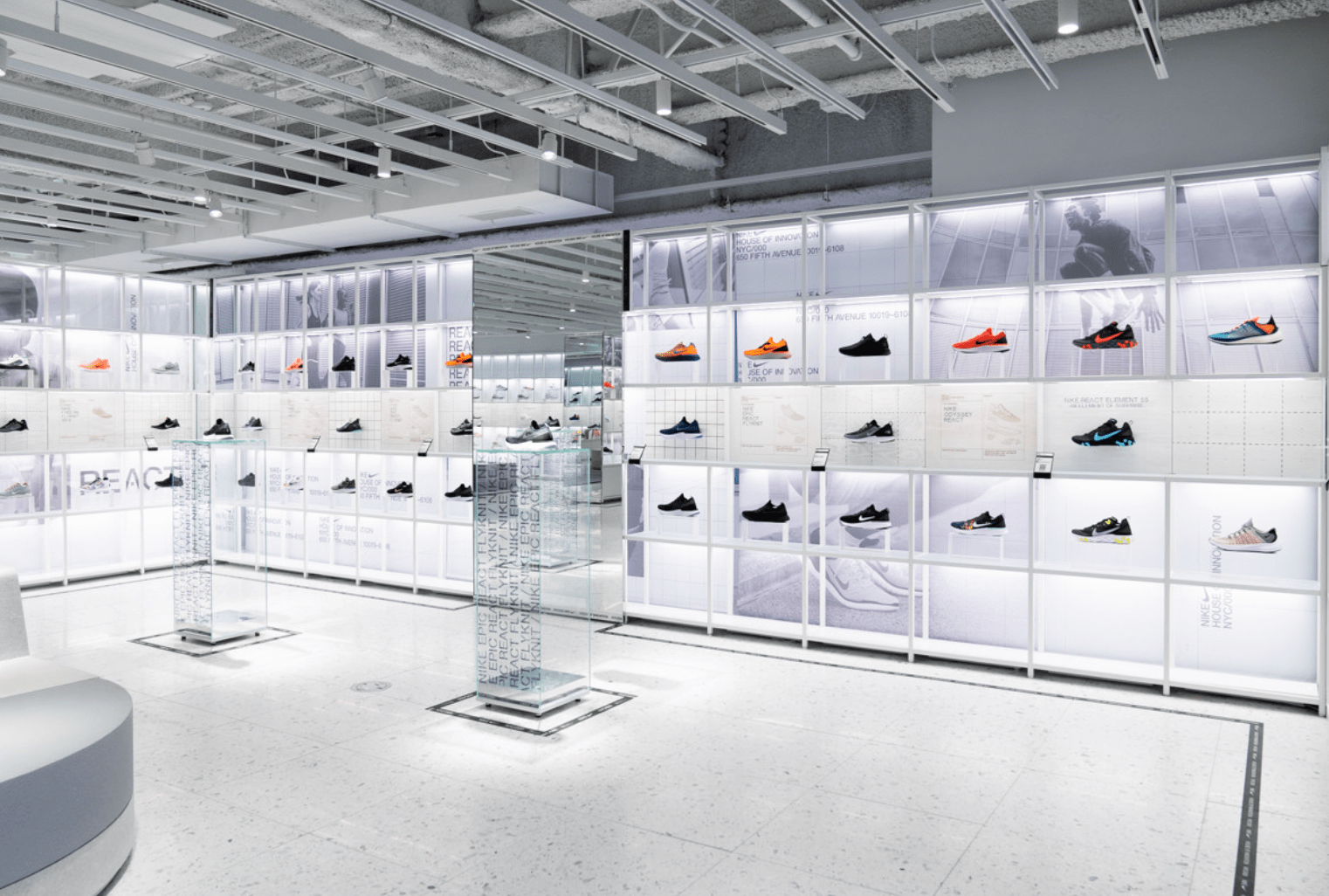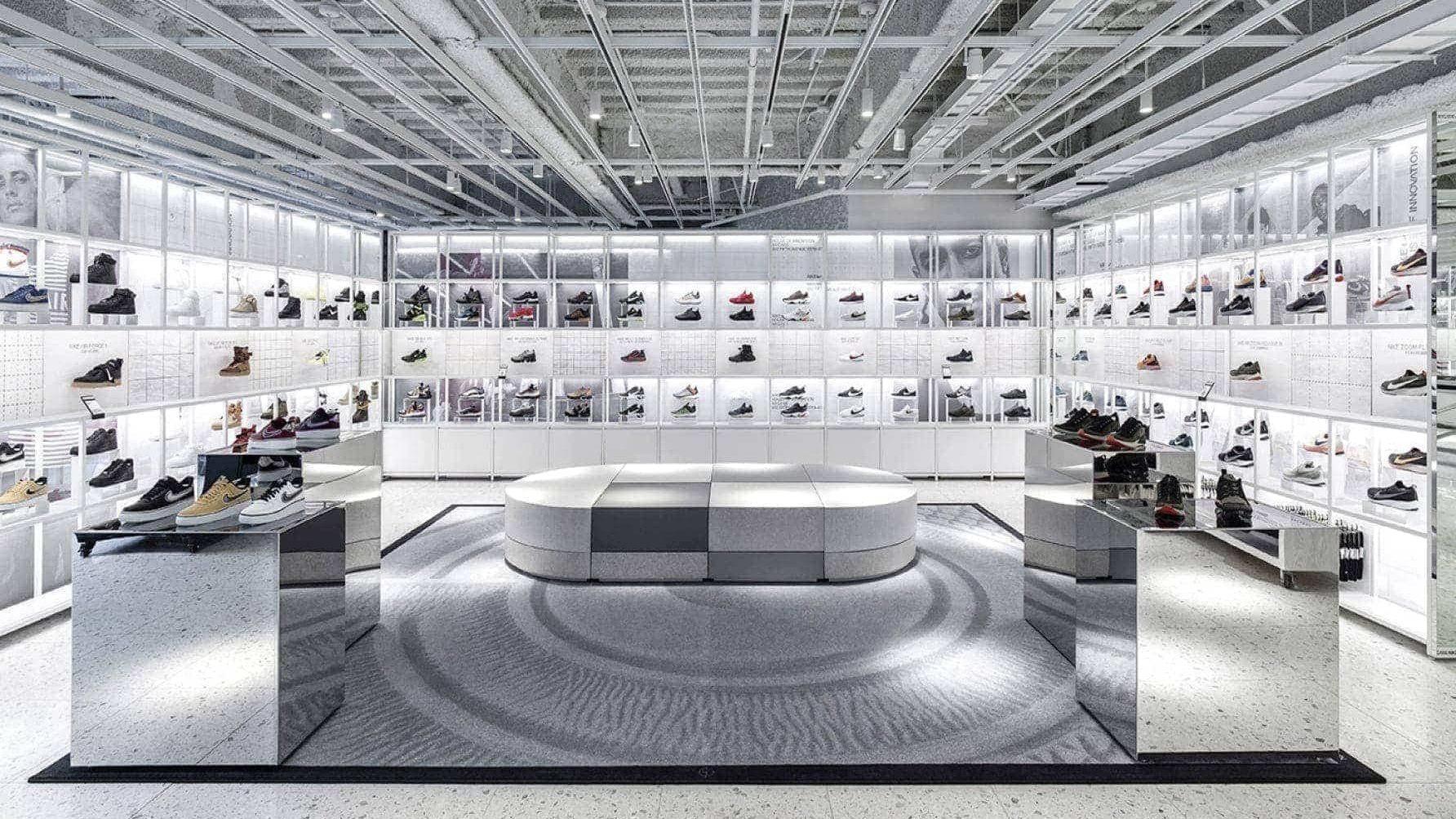
How do Nike and Adidas use lighting in their New York stores?
Light is one of the most important elements of any retail space. When specified correctly, lighting systems ensure that shoppers are able to view products properly and create an atmosphere that is appropriate for the brand’s identity.
So, how do two of the world’s biggest, most celebrated brands – Nike and Adidas – use lighting to create high-impact store environments?
We explored their New York flagship stores to compare how different types of lighting technologies are used to create attention-grabbing retail spaces that have become fully-fledged tourist destinations in their own rights.
Ambient Lighting
The ambient lighting of an interior space refers to its general light level that is provided by ceiling fixtures and natural daylight. In retail environments, adequate ambient lighting is crucial for ensuring that customers have the right experience when browsing in a store and that they are able to see all the details of product ranges, descriptions and prices.
Nike and Adidas are both experts when it comes to using ambient lighting to create ultra-effective retail spaces. They use cutting-edge fixtures such as recessed ceiling lightboxes, linear lightbars and LED spotlights to create visually dramatic environments with atmospheres that reflect their brand identities to a tee.
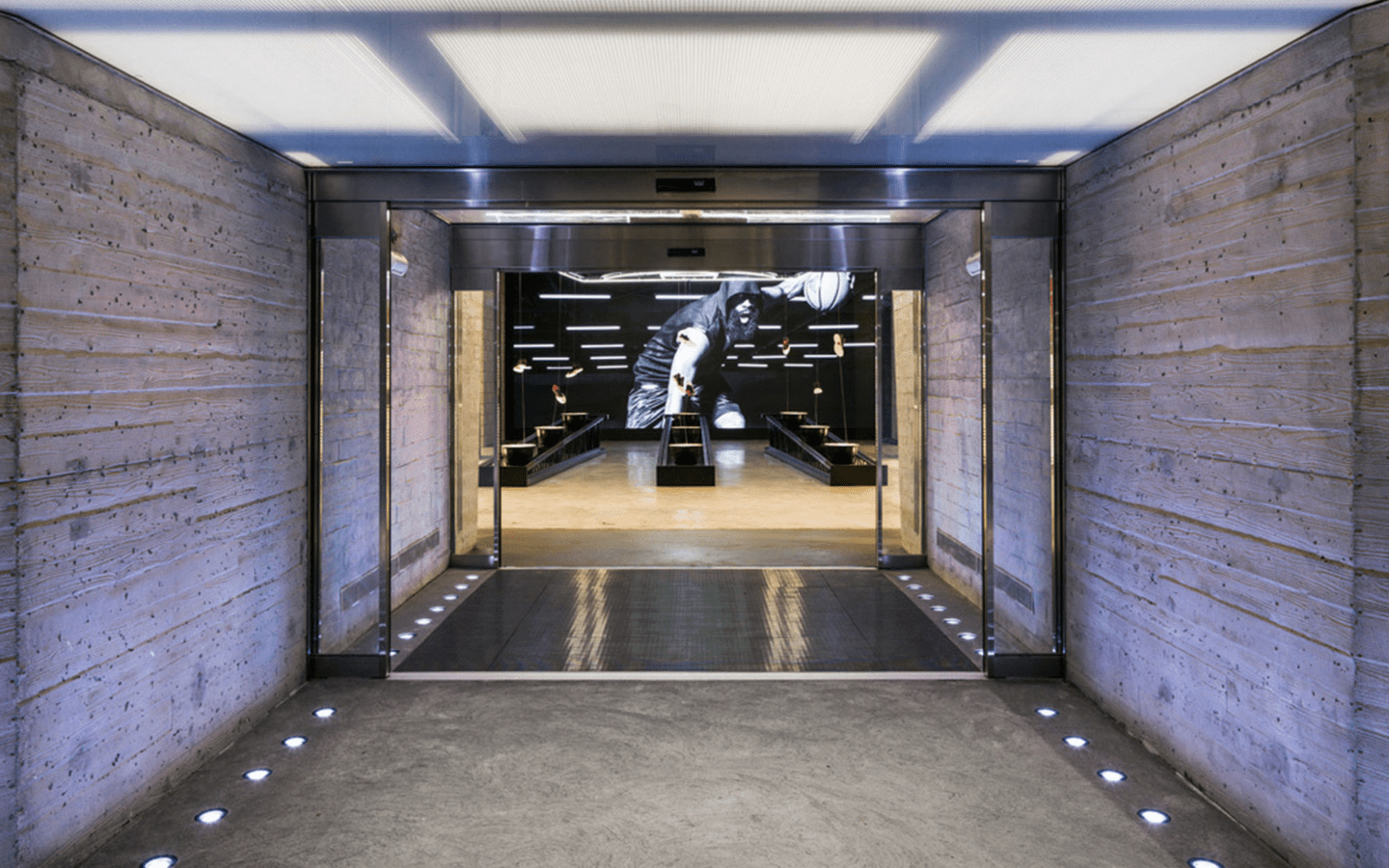
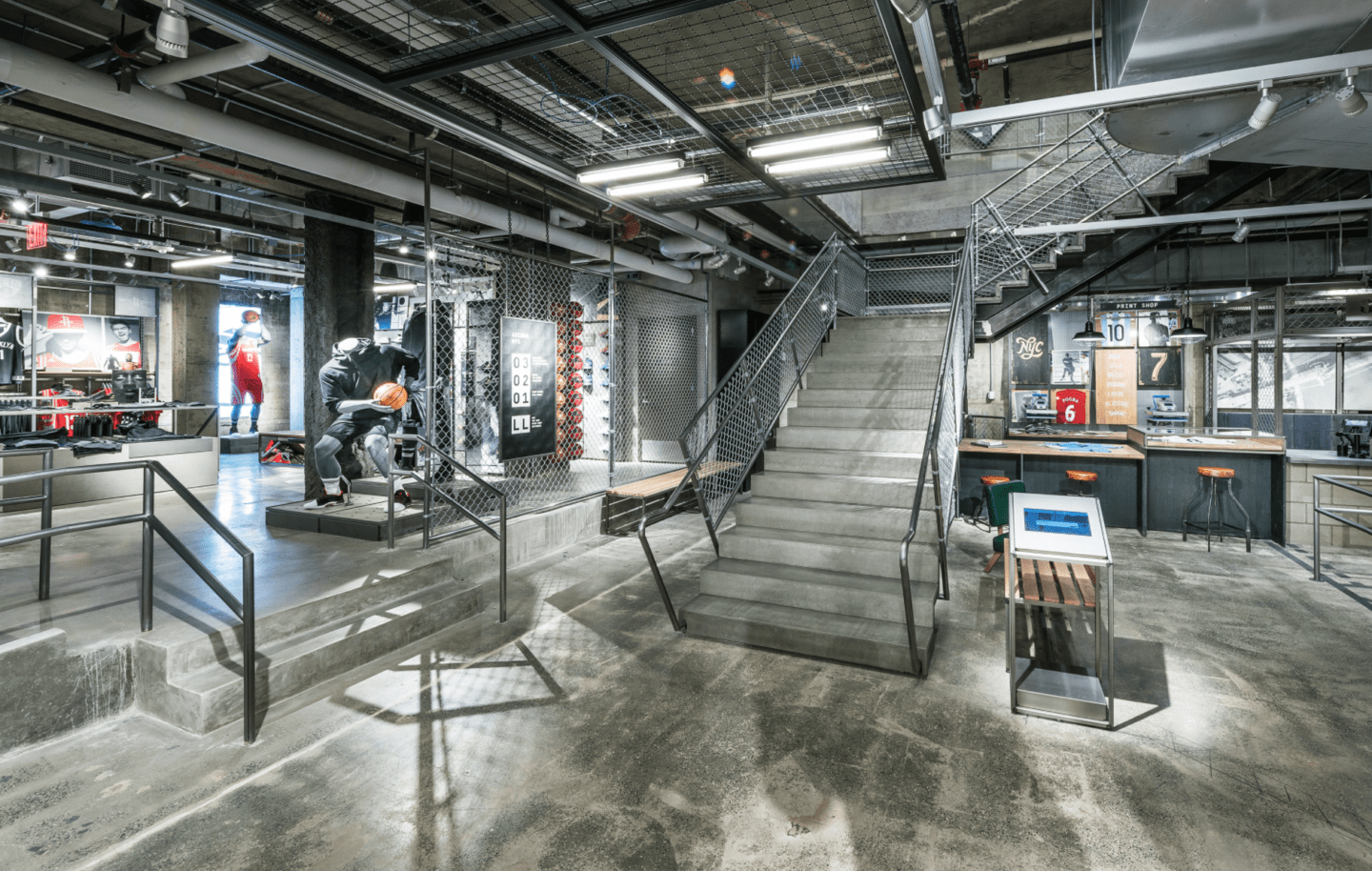
Animated LED Displays
Animated or dynamic illuminated displays are proven to catch the attention of shoppers quicker and easier than static equivalents. It’s a fact that human eyes are drawn to movement, and animated displays harness this to their advantage.
Nike really does steal the show where dynamic displays are concerned. Its New York store is full of high-impact illuminated displays that show custom animations in the most visible areas of the store.
For example, Nike has installed large video screens in the store’s main atrium to maximise the visual communication potential of previously unused space. When travelling between floors, customers are forced to engage with the messages that are displayed on the screens and absorb the information they are shown.
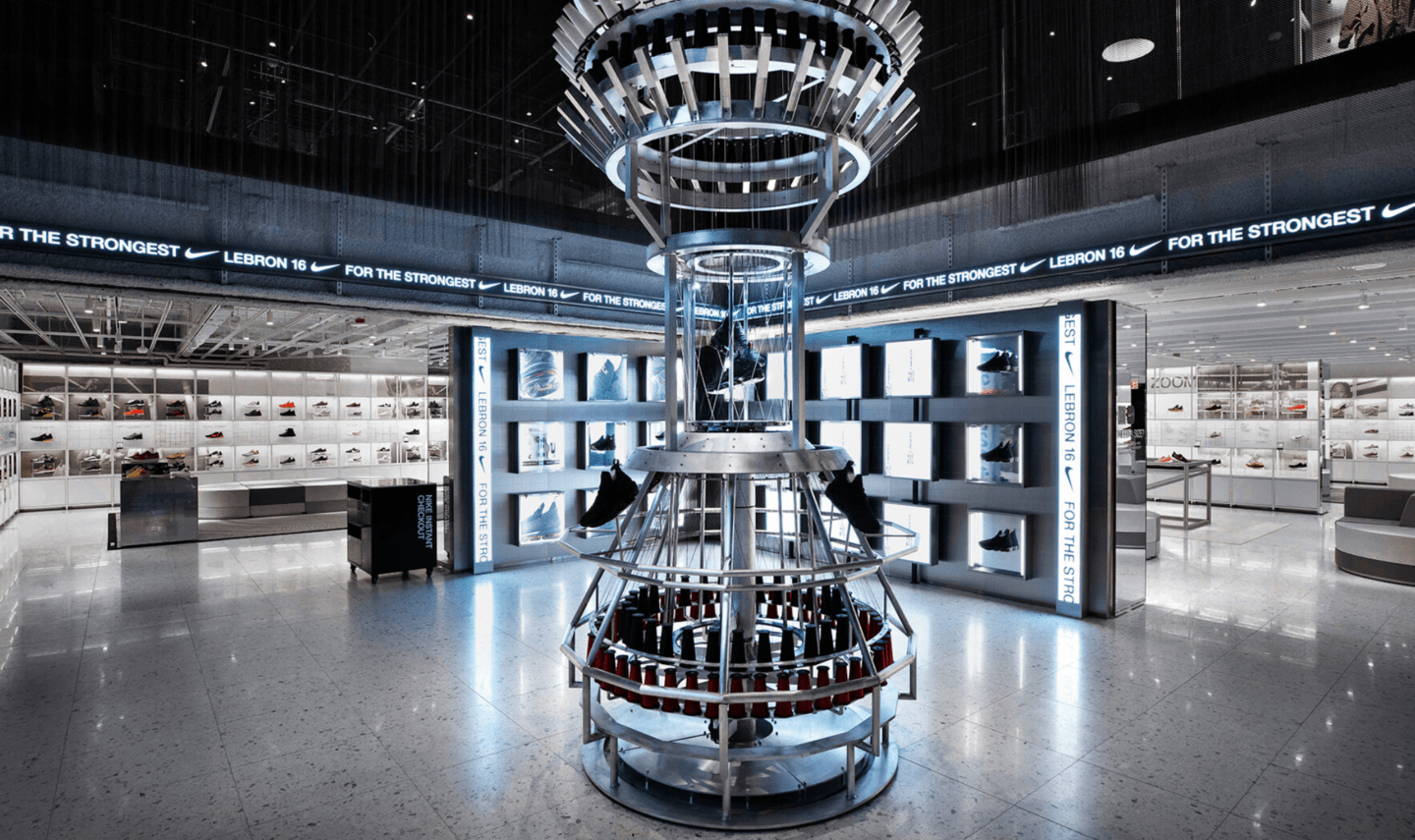
Nike also has scrolling illuminated signage around the perimeter of the trainer department of its store. This is used to highlight key product promotions, such as the launch of Lebron James’ sneaker collection, by capturing the attention of shoppers with moving messaging and enticing them further into the area to explore the products on display.
Integrated Shelf Lighting
Shelf lighting is crucial in retail environments, as it directs the gaze of shoppers directly onto product displays. Shelf lighting is a form of task lighting since it enables people to perform a particular task – in this case, it enables shoppers to appreciate all the details of a product and read any descriptions or specifications.
Again, Nike is the winner when it comes to this. Just as in its other House of Innovation stores, Nike uses incredible shelf lighting to showcase its footwear ranges in its New York flagship. Bright LED lighting systems bathe row upon row of trainers, football boots and leisure shoes to create an environment that reinforces the overall laboratory aesthetic that Nike is trying to cultivate throughout the store. The effectiveness of the product lighting and the high-tech, almost clinical atmosphere are enhanced with the use of a predominantly white colour pallette.
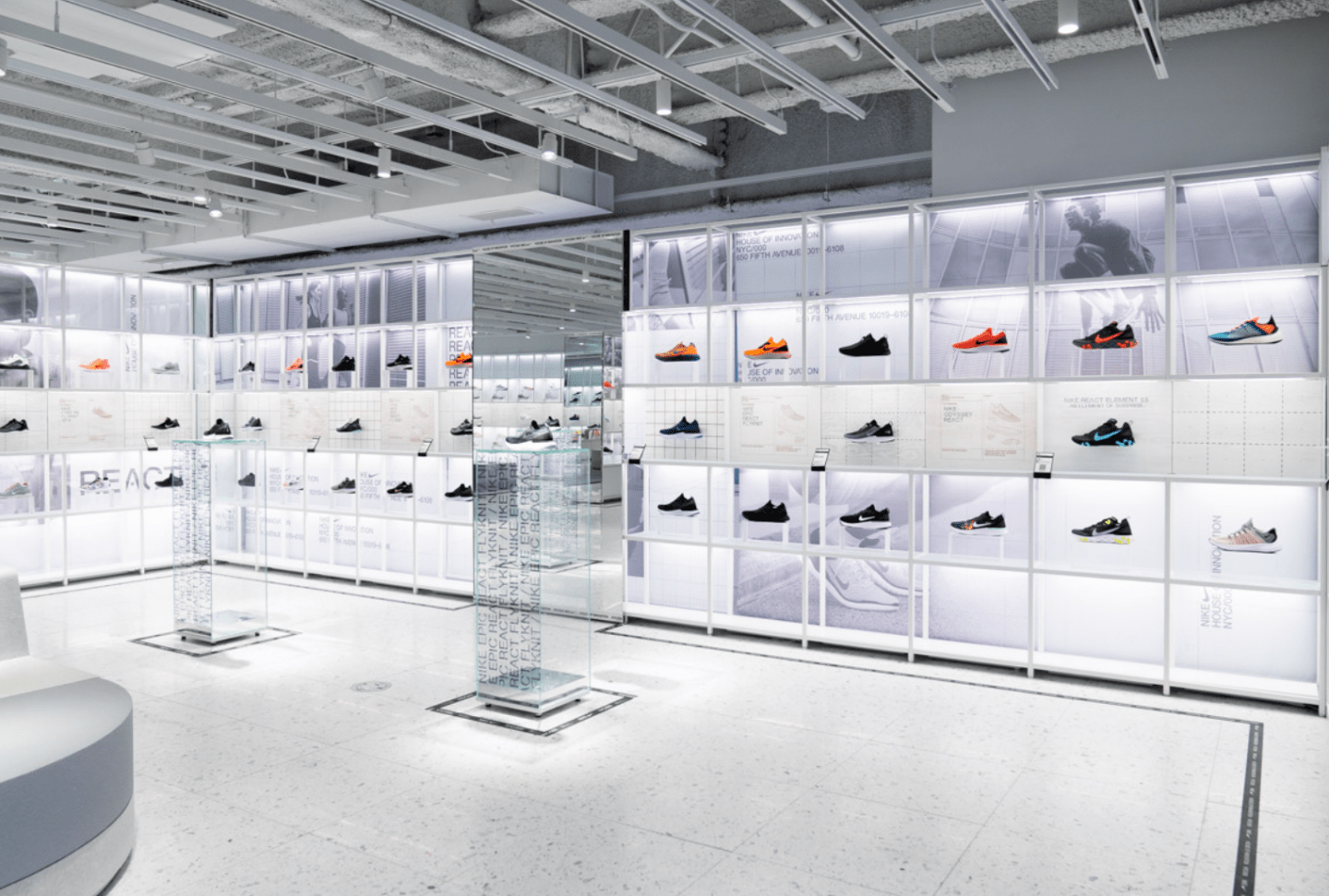
Illuminated Graphic Displays
Both brands employ lightboxes to break up product walls, allowing each range to be absorbed, rather than crowded by adjacent ranges. Using a static illuminated graphic allows Nike and Adidas can display higher resolution images than the animated graphics, attracting attention to key product areas and promotions throughout the store.
Both brands also use hyper-local graphic displays to create a sense of community and exclusivity in their stores. Lightboxes showing images from the local areas alongside real-time data about the New York area encourage customers to engage with the stores on a personal level.

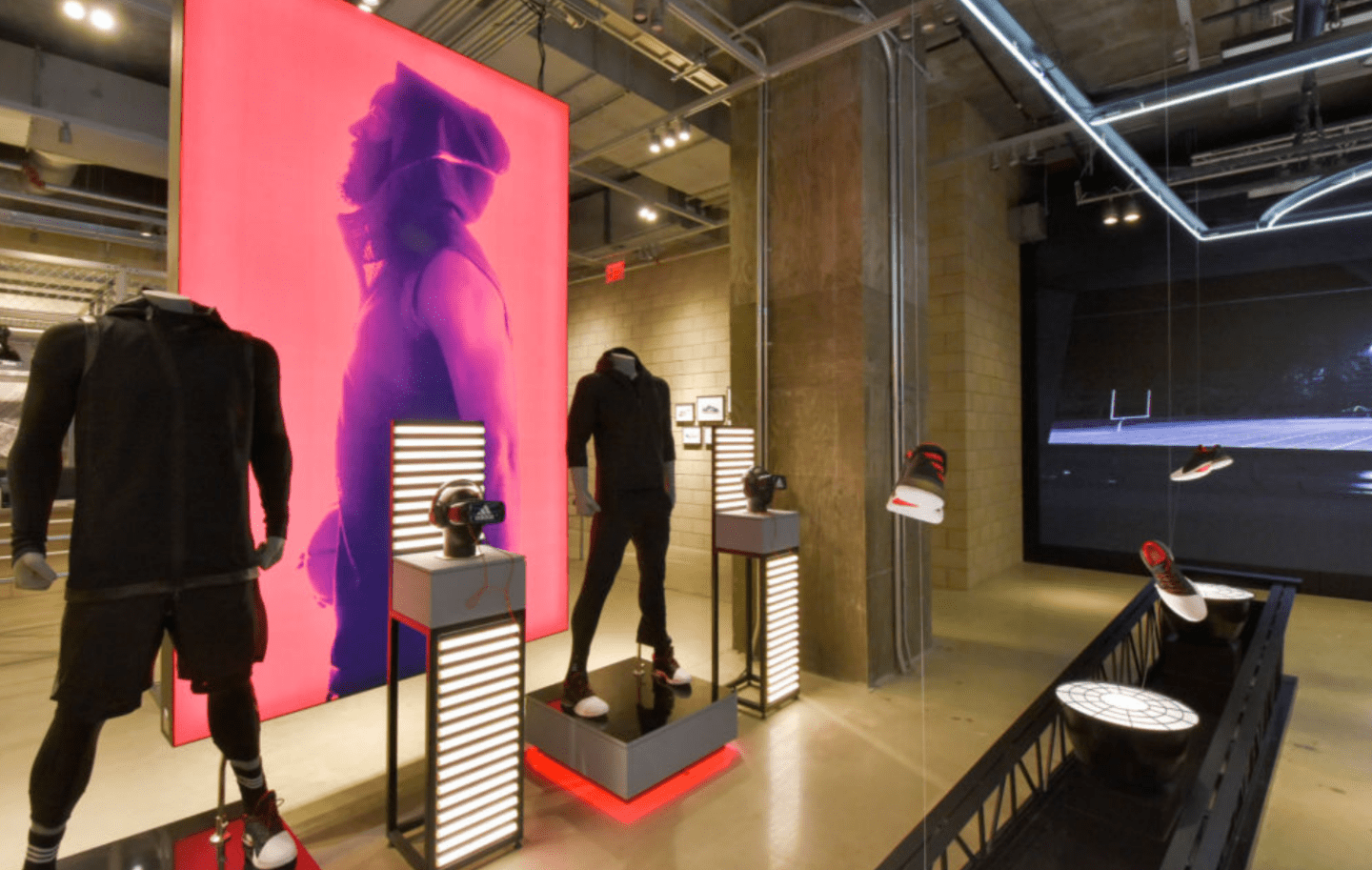
Illuminated Signage
Nike and Adidas use illuminated signage to draw attention to key product ranges, services and in-store experiences. Far more so than non-illuminated signs, LED signs to grab the attention of passers-by and make a lasting, meaningful impression on a brand’s target customers.
Nike, for example, uses striking neon-effect signage to point shoppers toward its in-store Makers Studio. The sign brings a burst of youthful energy and retro charm into the space whilst ensuring that the customisation zone is instantly visible to customers, even from a distance.

Feature Lighting
Adidas uses custom feature lighting installations to reinforce the stadium aesthetic of its New York store. A huge LED basketball court fixture sits suspended above the shop floor to echo the product ranges on display and create a real wow factor.

By suspending the fixture from the ceiling, Adidas also creates the illusion of the space being much larger than it actually is by drawing the customers’ eyes up from floor level. This makes the store feel all the more impressive and more of a tourist destination.
Conclusions
Both Nike and Adidas are leaders of the pack when it comes to designing retail environments that delight the senses and generate sales. Lighting is one of the main tools they use to ensure their customers have memorable shopping experiences when in their stores, not just in New York but all over to the world. They use different types of lighting technologies and fixtures to create visually-dynamic spaces that catch the attention of shoppers and ensure they feel driven to make a purchase.
For more information on how lighting can be used to create retail spaces that deliver, speak to our team by emailing [email protected] or sending us a message here.

